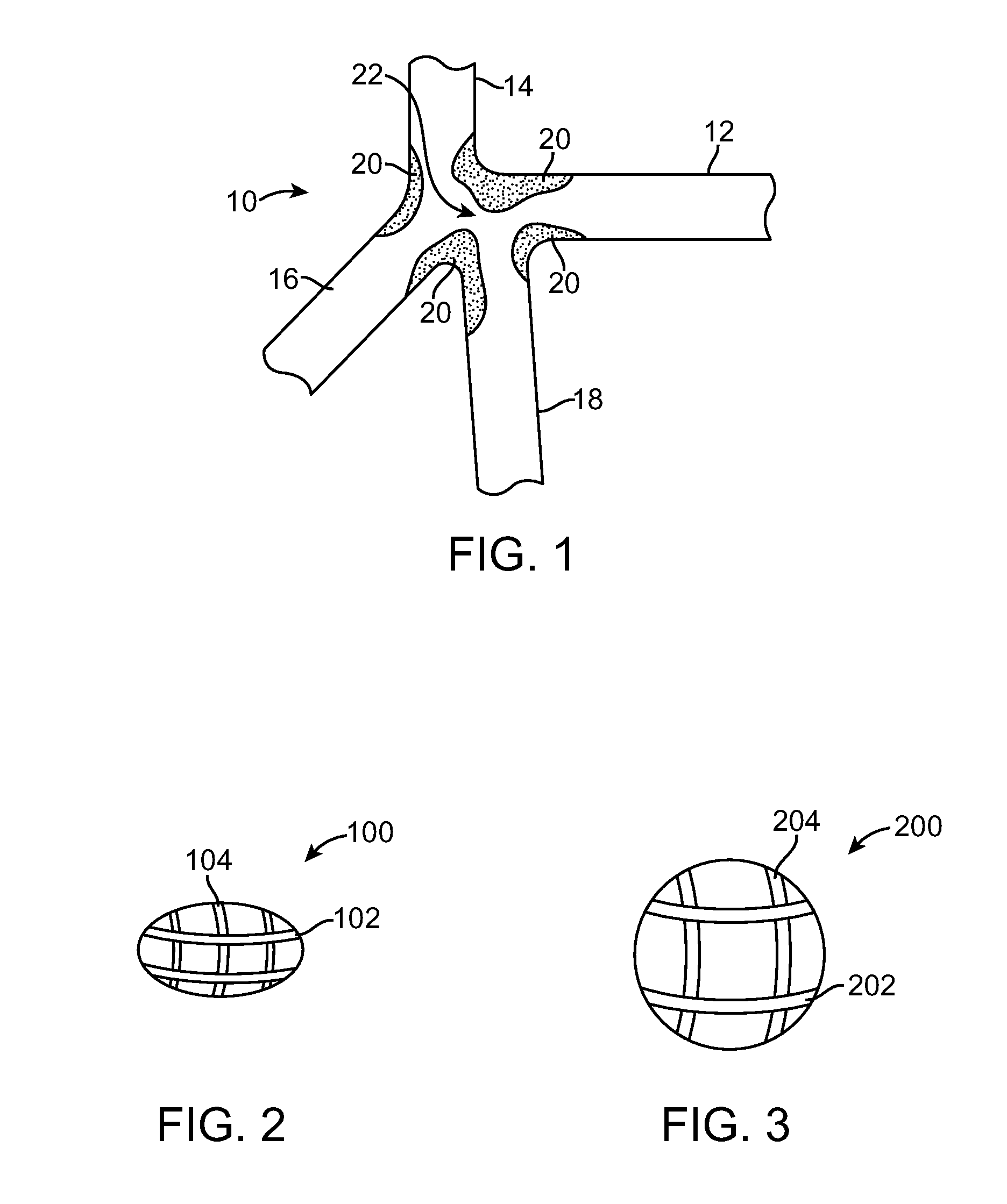Globe Stent
a global stent and graft technology, applied in the field of stents and grafts, can solve the problems of significant proportion of treated vessels restenose, difficult to achieve, and difficult to cur
- Summary
- Abstract
- Description
- Claims
- Application Information
AI Technical Summary
Benefits of technology
Problems solved by technology
Method used
Image
Examples
Embodiment Construction
[0028]Specific embodiments of the present disclosure are now described with reference to the figures, wherein like reference numbers indicate identical or functionally similar elements. The terms “distal” and “proximal” are used in the following description with respect to a position or direction relative to the treating clinician. “Distal” or “distally” are a position distant from or in a direction away from the clinician. “Proximal” and “proximally” are a position near or in a direction toward the clinician.
[0029]FIG. 1 shows a trifurcated vessel 10 including a first vessel branch 12, a second vessel branch 14, a third vessel branch 16, and a fourth vessel branch 18. Lesions 20 located at a junction 22 reduce blood flow, possibly leading to cardiac arrest. Lesions 20 located at junction 22 are difficult to stent using conventional, tubular bifurcated stents. Although a trifurcated vessel 10 is shown in FIG. 1, those of skill in the art would recognize that the vessel could be a bi...
PUM
 Login to View More
Login to View More Abstract
Description
Claims
Application Information
 Login to View More
Login to View More - R&D Engineer
- R&D Manager
- IP Professional
- Industry Leading Data Capabilities
- Powerful AI technology
- Patent DNA Extraction
Browse by: Latest US Patents, China's latest patents, Technical Efficacy Thesaurus, Application Domain, Technology Topic, Popular Technical Reports.
© 2024 PatSnap. All rights reserved.Legal|Privacy policy|Modern Slavery Act Transparency Statement|Sitemap|About US| Contact US: help@patsnap.com










